Learning to Ask "What's Next?" Like a Child
Refections on staging Yevgeny Zamyatin's WE and his 1923 essay "On Literature, Revolution, Entropy, and Other Matters”
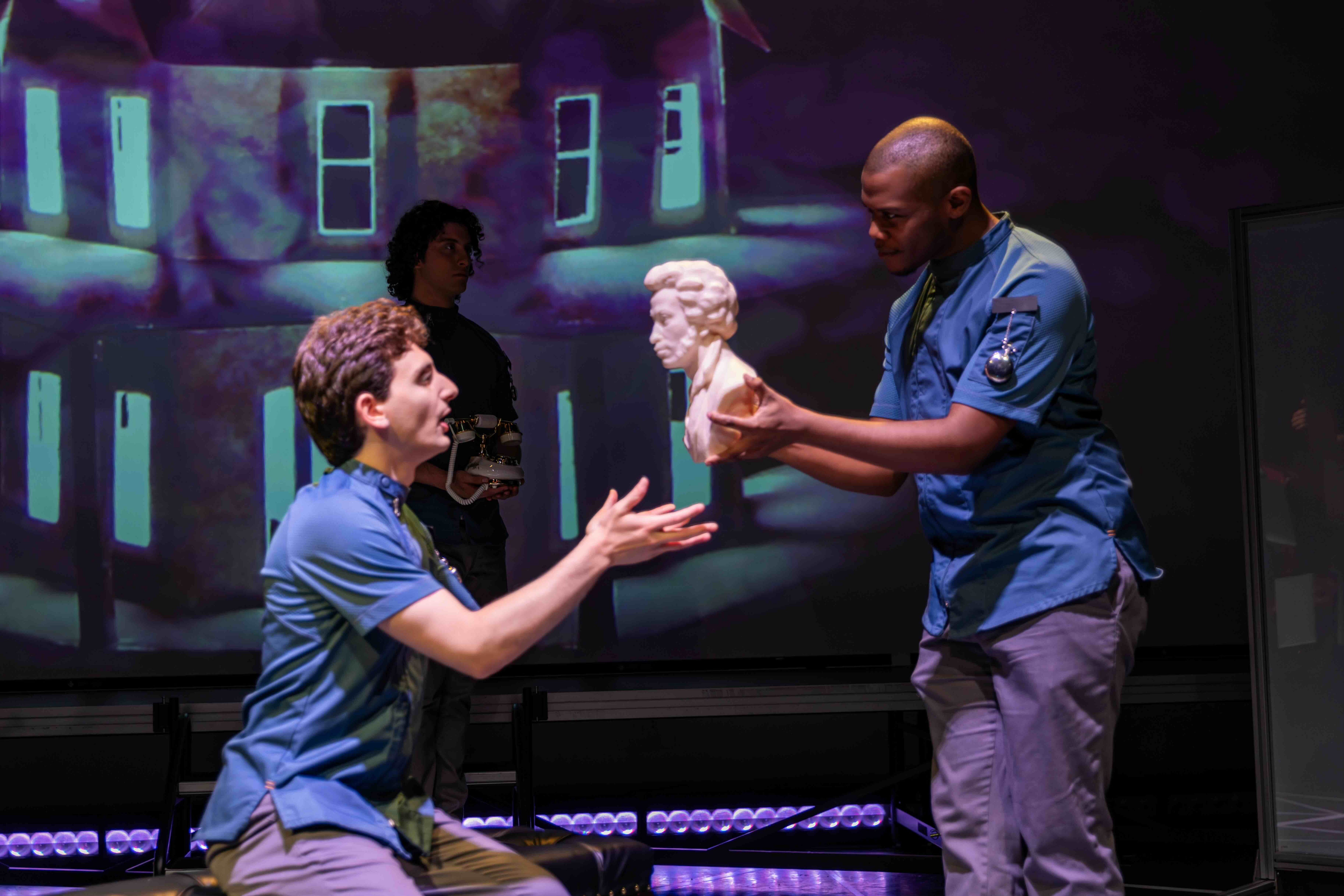
Independent theater provides opportunities for artists like myself to bring unique and groundbreaking work to life, offering a stage for voices that might otherwise remain unheard. By championing independent theater, you can nurture a vibrant ecosystem where creativity thrives and varied perspectives enrich the performing arts.
Last summer and fall I wrote a series of essays about producing and directing a theatricalization of the banned dystopian novel WE by Russian author Yevgeny Zamyatin. I wrote those pieces while I was developing and rehearsing the production to present a behind-the-scenes look at the joys and challenges I experienced making independently produced theater in Brooklyn, New York.
When technical rehearsals began, I had too much on my plate to continue writing. I was at the theater all day and when I came home, I went straight to bed. The next morning I returned to the theater—I wish every day of my life was like that.
My plan was to get through tech and then write an essay about how it went. After the show opened, I changed my plan and decided to write this as soon as the show closed. WE closed over nine months ago.
Since last October, I’ve struggled to find enough enthusiasm to sit down and write. I explain the source of my entropic ennui at the end of this essay and how Zamyatin’s writing inspired me to continue. In fact, once I sat down to write this essay, I discovered I had enough material for two pieces. The second half I’ll publish at a future date.
So, without further ado, here’s where I left off nine months ago.
A Tech for Dystopia
Technical rehearsals are the first time my collaborators and I experience the lights, sound, costumes, props, scenic design, shadow puppetry and video projections all together; it takes time to evaluate how these elements are dancing together and to decide what, if anything, needs adjusting to clarify the meaning of each moment. Are the elements working in tandem to convey location and time of day? Do we want them to express the same feeling the actors are conveying, or will the scene be more meaningful if the design elements are expressing a mood that is the exact opposite of the scene?
Although my creative process uses a “design-forward” approach that brings designers into the rehearsal room to co-create the piece alongside the actors, the work we make before tech is in a form I’d describe as “seeds of ideas”. It isn’t until we have the equipment that comes with the theater rental that we genuinely see our design ideas in full bloom.

There are also logistical challenges to resolve in tech. Can the lighting be dimmed in this moment to make the video projection more vibrant? Is there a place on the set where we can hide a prop an actor doesn’t have time to go off-stage and pick up? Can we use the shadow puppet screens to cover an actor’s on-stage quick change? Who’s available to move the screens to the right place? Can someone please move that stage-right screen three inches to the left so it’s in the light? It’s meticulous and sometimes tedious work, but I enjoy every moment; as Broadway composer and lyricist Stephen Sondheim said, “God is in the details.”
Typically tech starts slow and later speeds up. That’s because once we land on a few looks we all like, we can repeat them later in the show. The tech for WE didn’t play out that way because there were so many different locations within the panopticon-like dystopia of the novel’s “One State” setting. The play quickly transitioned to and from a variety of places: inside a glass apartment, on a city street, aboard an aircraft, outside the museum of the “Ancient House”, inside someone’s dream etc. As we started tech, there weren’t many looks we could easily duplicate, which made the tech move at the speed of a glacier.
I only had seven days of tech; I aimed to finish in six so we could run the show twice before opening night. At the end of the fourth day, we were only halfway through Act I. We still had half of Act I and all of Act II ahead of us.
On the fourth day, we were bogged down by a tricky moment in the play that, in retrospect, required the expertise of an illusionist. I didn’t have the foresight or the budget to hire an illusionist, so I planned to simultaneously use sound, light, shadow and video projection to make it look like the Benefactor (the authoritarian leader of the “One State”) publicly executed a “criminal poet” in his “Machine”. We had to make it look like the Benefactor’s Machine used advanced, futuristic technology to explode the poet. It took hours to get the timing of several design elements just right to achieve the effect.
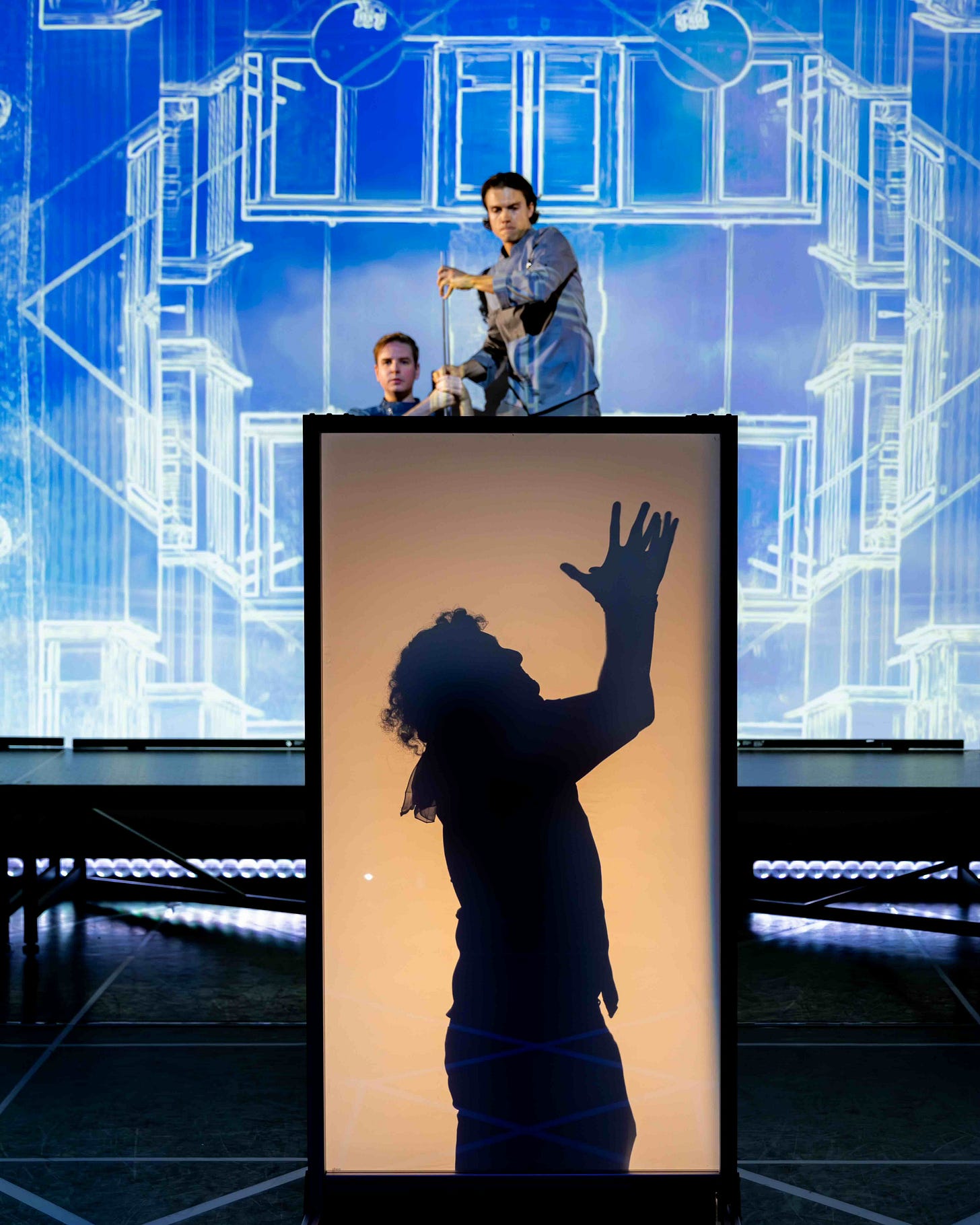
In drama, it never ends well for poets (see Shakespeare’s Julius Caesar), and by the end of the fourth day of tech we were all worried it was not going to end well for this production of WE. If we did not finish the tech in time, we would not be able to run the show before opening—which is dangerous. That night, the designers and I met to discuss how we could move things along faster to ensure we had at least one final dress rehearsal before opening night.
The next day we picked up speed. As we neared the finish line, there was an unexpected design thrill.
The show incorporated shadow puppet screens that worked by backlighting with flashlights operated by actors. In most instances, the shadows were black. But in a scene near the end of the show, the lighting designer turned on red strip-lights placed on the floor. The strip-light source combined with the flashlight source created an unanticipated effect: the shadows turned red! I jumped out of my seat with excitement, and wondered aloud how this could have happened. The lighting designer explained the science behind the effect, but to this day I think it’s magic.
Red shadows were the perfect fit for a tense scene depicting an impotent bludgeoning. The protagonist’s failed attempt to murder his nemesis with a piston rod is surely Zamyatin’s hat tip to Dostoyevsky—Russian authors love their predecessors—I hope we did him proud with our blood-red lighting effect.
With two days left of tech, things were moving in the right direction when we slammed into off-stage drama: someone stole costume pieces from the dressing room!
The characters in Zamyatin’s dystopian “One State” wear identical uniforms. Alyssa Korol, our canny costume designer, developed a beautiful uniform that was fittingly futuristic but also nodded to the fact Zamyatin’s novel was written in 1920—she attached anachronistic pocket watches to the sleeves of each uniform.
These watches were $10 each on Amazon, a price an independent producer on a small budget is more than happy to pay. Apparently, a thief thought these watches were worth a lot more than $10, and stole half of them two days before opening.
Experiencing theft is devastating. I felt violated, not only by the act of the theft, but because of what was stolen. Working with Alyssa to realize her pocket watch idea took a long time. We looked at several versions of watches for months before we identified one that looked right but was also within the budget. Each watch had to be fit to every actor’s sleeve with a different length of chain and they were all secured to the sleeve by velcro, hand sewn by Alyssa. Although the theater staff offered to cover the cost of replacements, I explained it wasn’t just the items that were stolen—it was our artistry—that problem couldn’t be solved by throwing money at it.
Amazon couldn’t deliver replacements for three days, but the show opened in two. I also scheduled a photo shoot before opening; we were at risk of having pictures taken that didn’t illustrate our carefully crafted vision.
While tech continued, Alyssa dashed from the theater in Brooklyn to the wholesale sellers in midtown Manhattan to source replacements. It was not easy to find pocket watches that matched the ones the thief left behind, but Alyssa found suitable “do for now” versions that would get us through the photo call and opening night until the replacements arrived from Amazon.
We finished tech the night before opening. The next day, we had just enough time to run the show once.
There wasn’t enough time for a dedicated photo shoot, so the incredibly talented Jonathan Levin photographed the final dress rehearsal as the actors performed. Taking photos of actors under stage lighting is hard enough when the actors are still, when they move around, sometimes very quickly, it’s nearly impossible to get good photos. But Mr. Levin is no ordinary photographer—as the final dress rehearsal ran, Jonathan nimbly darted around the theater, capturing the vibrant photos in this essay.
Once the show opened, my days overflowed with new responsibilities like laundering the costumes, posting photos on social media to sell tickets, and desperately emailing potential critics to review the production. At the last minute, I was asked to give an online presentation about the show. With all that going on, I couldn’t find time to write.
I also had trouble focusing because it was such an exhilarating time. Friends, family, professional colleagues, former teachers and complete strangers came to the show. Additionally, we had a large group of college students and an even bigger group from a drug and alcohol rehab center. I first read WE in the summer of 2020; I was bursting with glee because the show I had worked on for years was finally playing to audiences. Something that was once an idea in my head was now on stage. It was a thrilling time.
The show ran for eleven performances from October 11 to 20, 2024.
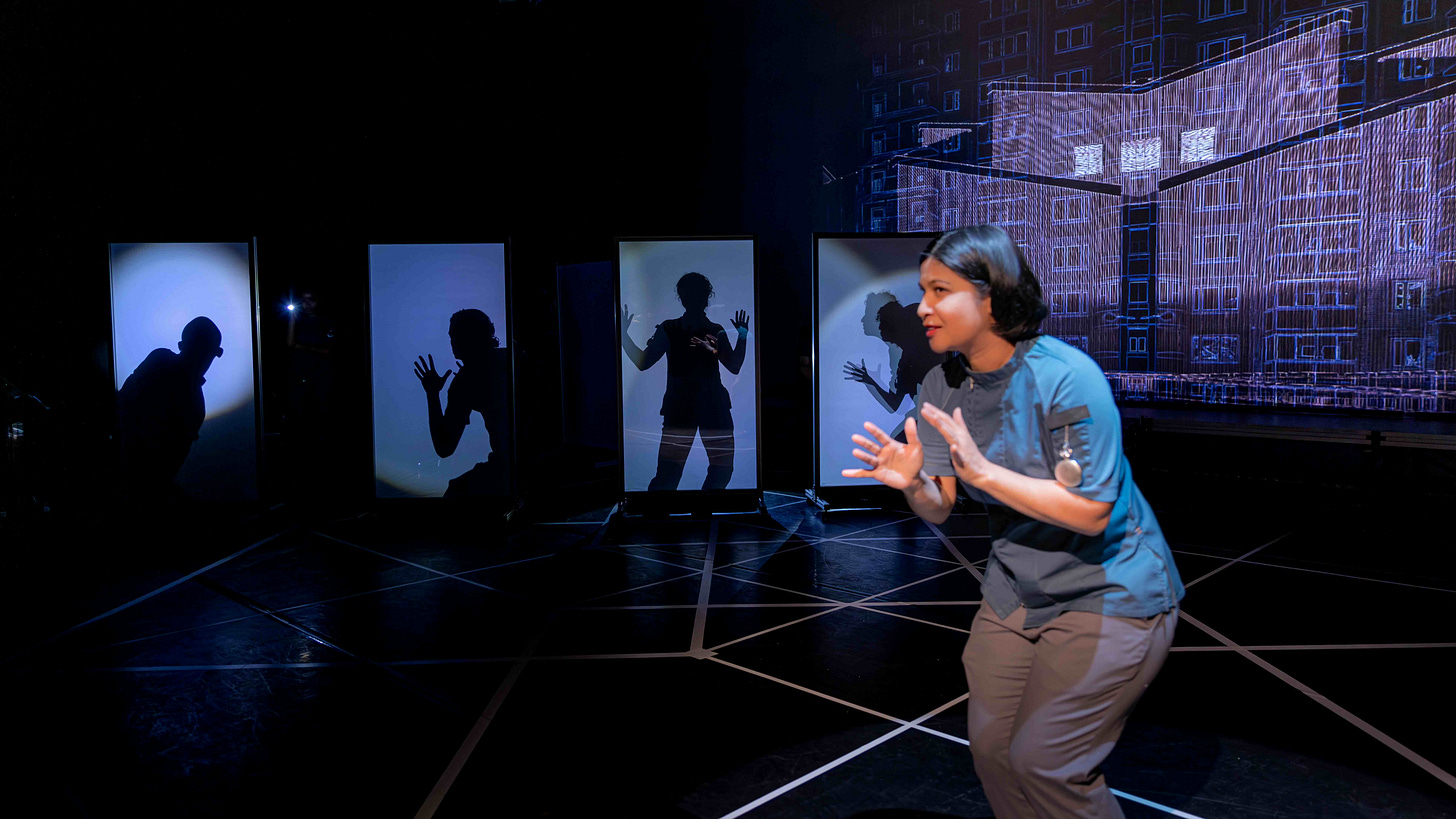
Traditionally, directors leave after a play opens—I stayed and watched every show. I was delighted to see the actors’ performances develop over the run. The pacing grew tighter, the moving screens were placed in the correct spots, and the characters became more believable. In front of an audience, the actors found humor that wasn’t present in the rehearsal room. This was a difficult show because the cast had to act (some played several characters), move set pieces and be puppeteers, often switching between these roles in quick succession. I asked a lot from the cast, and they delivered. They made me very proud. I was particularly pleased that, on the last performance, one of the actors discovered a beautiful moment at the very end of the play that had eluded us in rehearsal.
After the final performance, we packed the screens, props and costumes into a car to be taken to my apartment on the other side of Brooklyn. Before I left the theater, the technical director noticed spots of adhesive residue left on the stage from the tape that created the hypercube floor pattern (see below). I agreed to return to the theater at the end of the week to scrub up the scum.
My plan was to write this essay after that.
But on my last day in the theater, something changed.
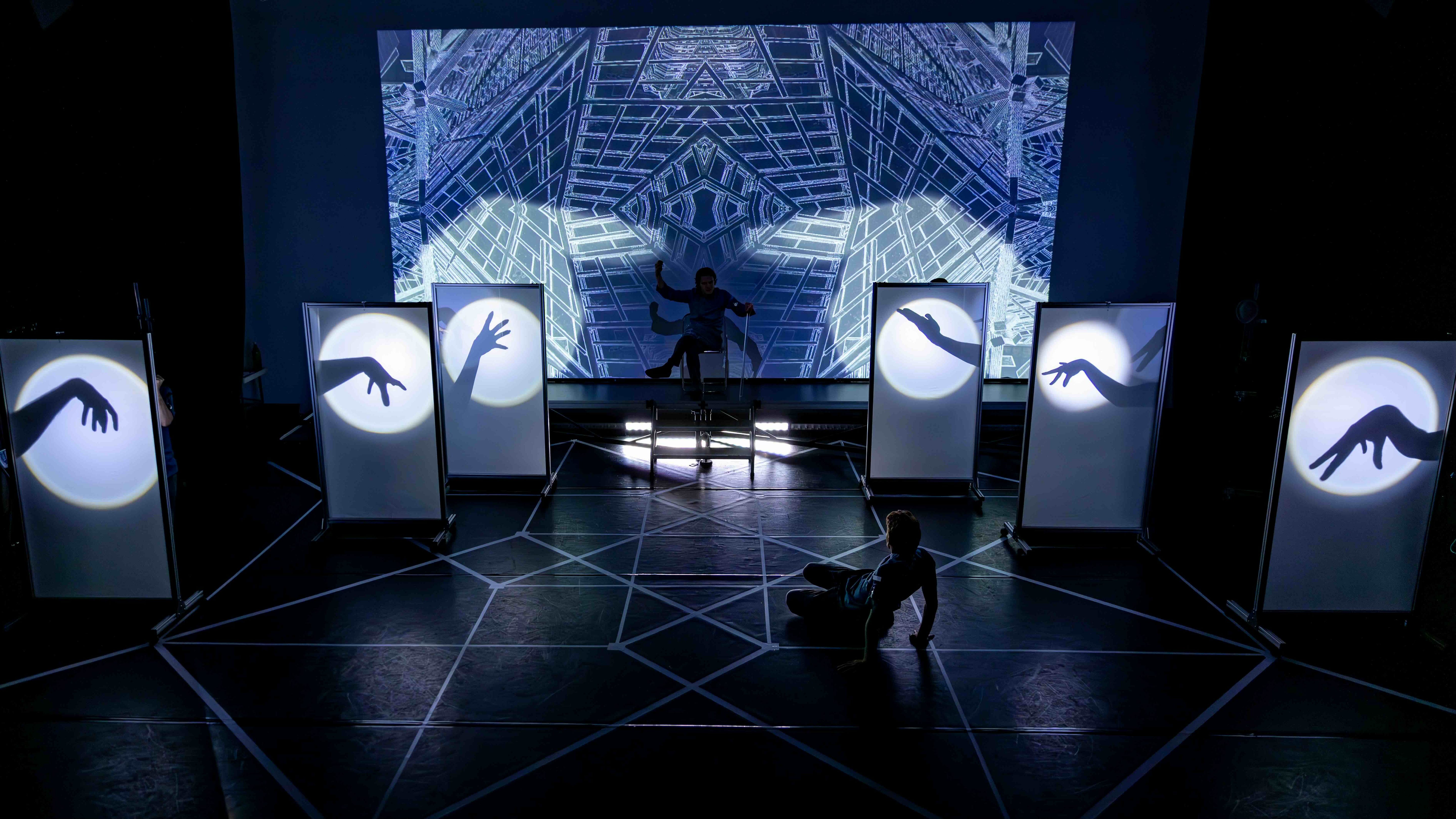
An Ending and a Beginning
At the end of the week I returned to the empty theater. As I was scrubbing adhesive residue off the stage floor, I began to feel a deep sadness. I realized after I scraped the last bit of goo off the stage, I’d be walking out of the theater for a very long time; all the joy and fulfillment I brought into my life creating the show with my collaborators over the previous years was going to end in a matter of minutes.
The theater’s technical director and I made one last inspection of the stage floor to see if we missed any residue. Neither of us spotted stray gunk and decided the job was done. As I walked out of the theater, I heard the technical director say from behind, “Good show.”
It was a good show; the one critic who reviewed the show agreed. I should have been ecstatic.
But as I walked out of the dimly lit theater onto a bright Brooklyn street on a crisp October afternoon, I felt a light in my heart go out. The energy that had been whirling around inside me since the summer came to a slow halt—it felt like emotional and spiritual entropy. Cars sped down the road and busy Brooklynites walked by. Life on the street was indifferent to my despair. My collaborators would move on to other projects, the audience members would see other shows, and I wouldn’t be intimately communing with the spirit of Zamyatin as I adapted his words into a play.
It felt like a dear friend died.
If I had been a smart director, I would have started rehearsals on my next project that day. Regrettably, all I had was an idea for a future adaptation.
I miss everybody. We’re all busy and I’ve only seen a handful of my collaborators since the show closed. But in the last nine months, I’ve found Zamyatin is one collaborator I can get in touch with easily. All I have to do is pick up his writing. Reading his work has helped sooth my malaise.
The essay that’s been most inspiring is “On Literature, Revolution, Entropy and Other Matters”, Zamyatin’s 1923 clarion call to his fellow writers, imploring them to resist conforming to the restrictions and orthodoxy the state imposed on Russian authors:
What we need in literature today are vast philosophic horizons—horizons seen from mastheads, from airplanes; we need the most ultimate, the most fearsome, the most fearless “Why?” and “What’s next?”
This is what children ask. But then children are the boldest philosophers. They enter life naked, not covered in the smallest fig leaf of dogma, absolutes, creeds. This is why every question they ask is so absurdly naïve and so frighteningly complex. The new men entering life today are as naked and fearless as children; and they, too, like children, like Schopenhauer, Dostoyevsky, Nietzsche, ask “Why?” and “What’s next?”
I know something about compelled conformity in the arts. I’ve written about my experiences with it here.
Zamyatin and I agree: artists should not be conformists. They should use their art to critique from the vantage point of an outsider. The best do it in a subversive way. I have no interest in “the fashion of the day” which insists I infuse my work with a sanctioned worldview. I will not comply with an ideology I don’t believe in. Theater has a long tradition of non-compliant artists who resisted restrictive social norms. Oscar Wilde, Mae West and Joe Orton all went to either jail or prison for going against the grain. Any artist worth his salt should know if everyone else is doing something, don’t do that, do something different. But this is not the aspect of Zamyatin’s essay that jolted me out of stasis. What changed my outlook was Zamyatin’s metaphor in regard to asking, “What’s next?” like a child.
I despise uncertainty. I hate that I don’t know when (or if) I will be able to start rehearsing my next project. Yet Zamyatin asserts I should not approach uncertainty with contempt. Instead, I should regard it with the wonder of a child. I should view uncertainty as an incredible opportunity: the possibilities of “what’s next” are, in a way, infinite. Anything can happen tomorrow: it could be something fantastic, something frightening or something unfathomable. It’s not reasonable to cling to a despairing attitude toward uncertainty. Fearing uncertainty has been paralyzing; it’s time to shake it off.
With this in mind, I re-read the novel I’m hoping to adapt, submitted a grant application to fund it, and spoke to the only person I know of who’s written a biography about the author.
Reading the novel again renewed my conviction that the book is a worthy choice. Writing the grant application honed my artistic approach to the piece, and speaking to another enthusiast who knows the book and the author well was delightful and inspiring.
Persisting in the face of uncertainty is resilience. I used to think resilience was a feeling that came during the high moments in life. Now I know it comes in the moments when the challenges are colossal, the future is Stygian, yet I relentlessly push a new project up the side of a mountain. I couldn’t say if this behavior is heroic, foolish or just plain stubborn—perhaps it’s all three—but it’s how an artist must proceed.
So here I am, at square one, with an idea for a future theatrical adaptation that has shadowed me like a phantom, calling me from the beyond to bring another under-acknowledged novel to the stage. When inspiration calls, it’s better to give in than attempt to ignore the poltergeist who comes knocking. I may as well open the door and face this specter—it never ends well for those who try to run.
WE was made possible by grant funding from the Foundation Against Intolerance & Racism (FAIR) in the Arts, the Puffin Foundation Ltd., and NYSCA-A.R.T./New York Creative Opportunity Fund (A Statewide Theatre Regrant Program). Production design support provided by the Edith Lutyens and Norman Bel Geddes Design Enhancement Fund, a program of the Alliance of Resident Theatres/New York (A.R.T./New York).



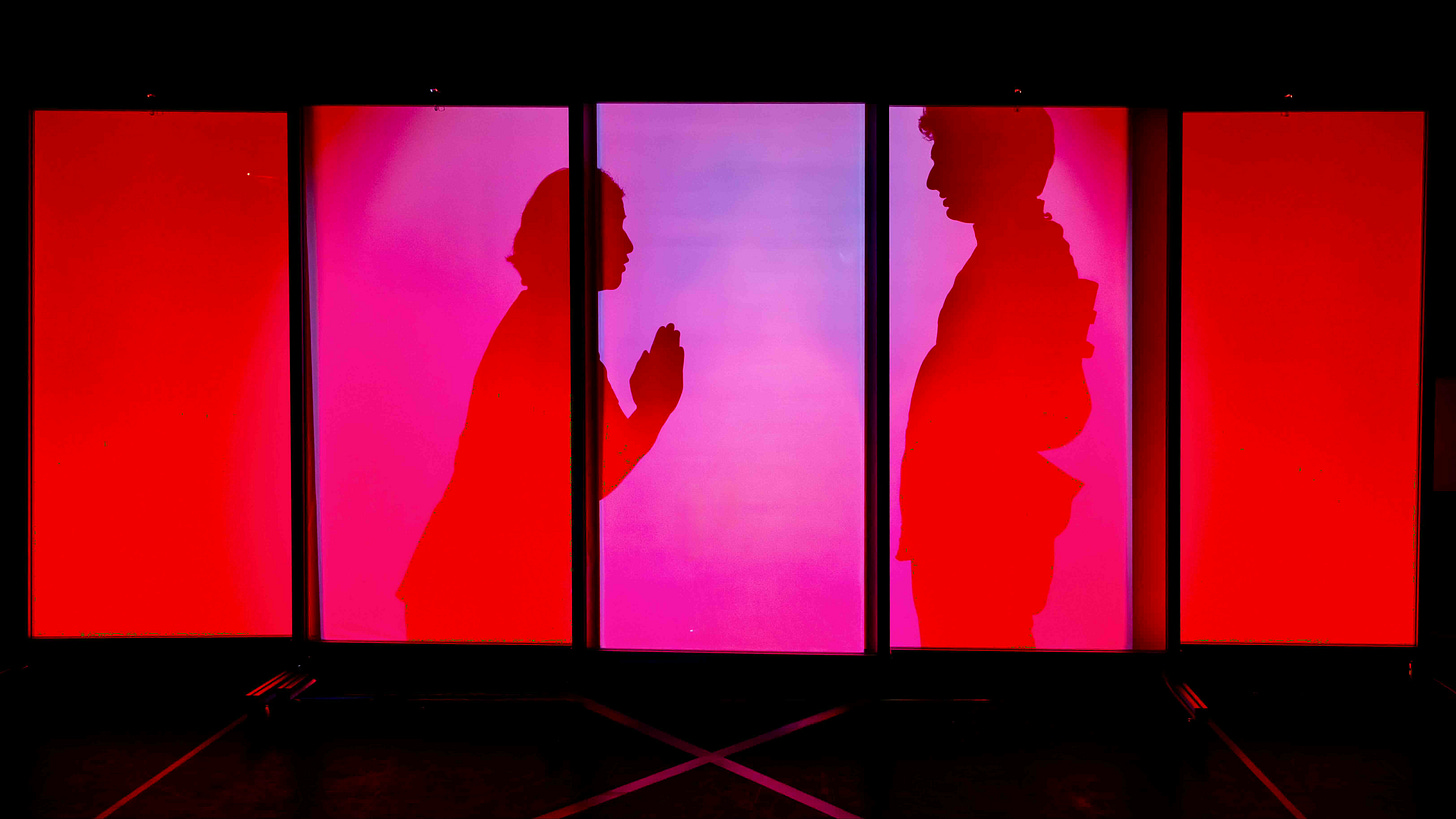
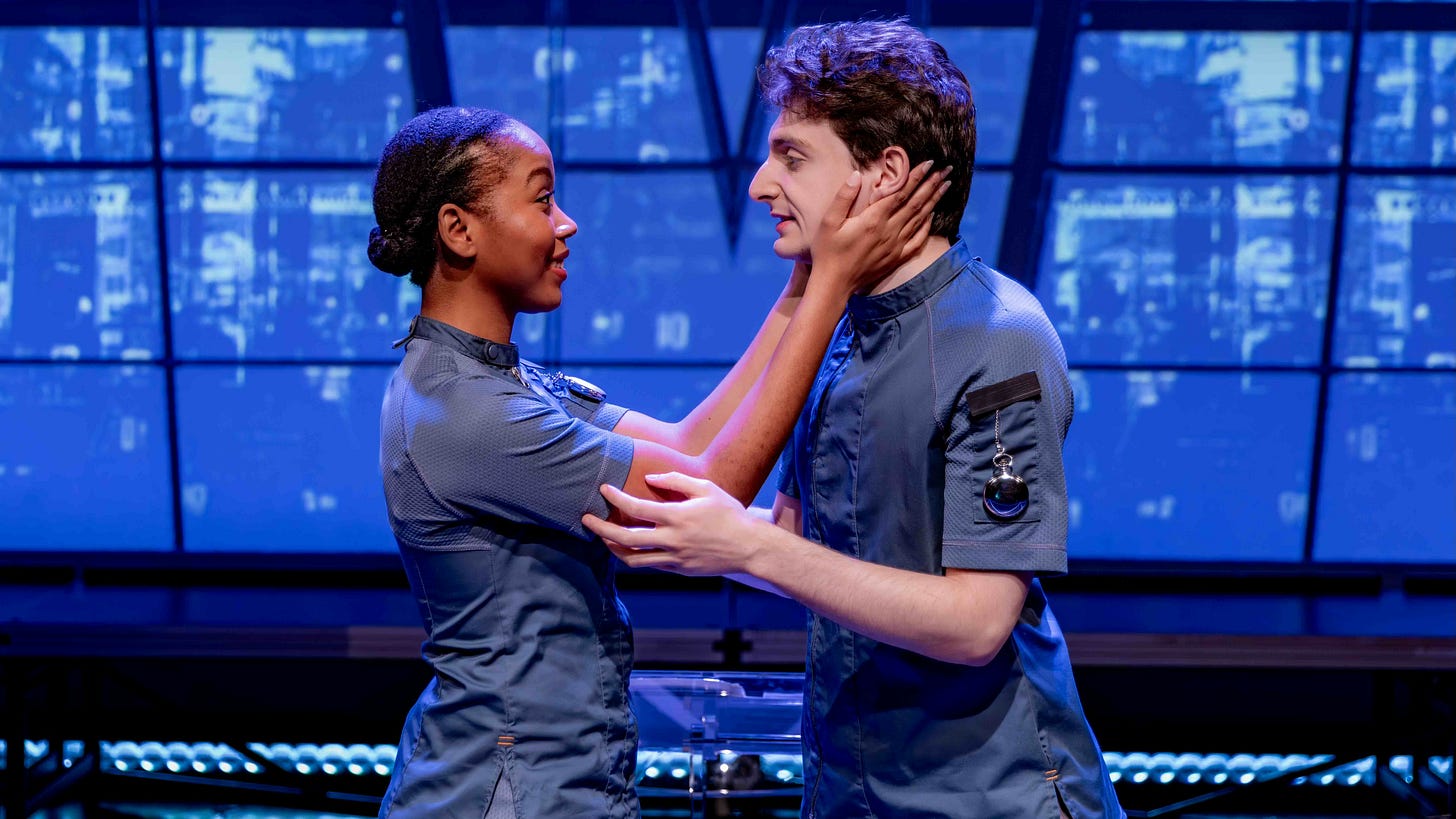
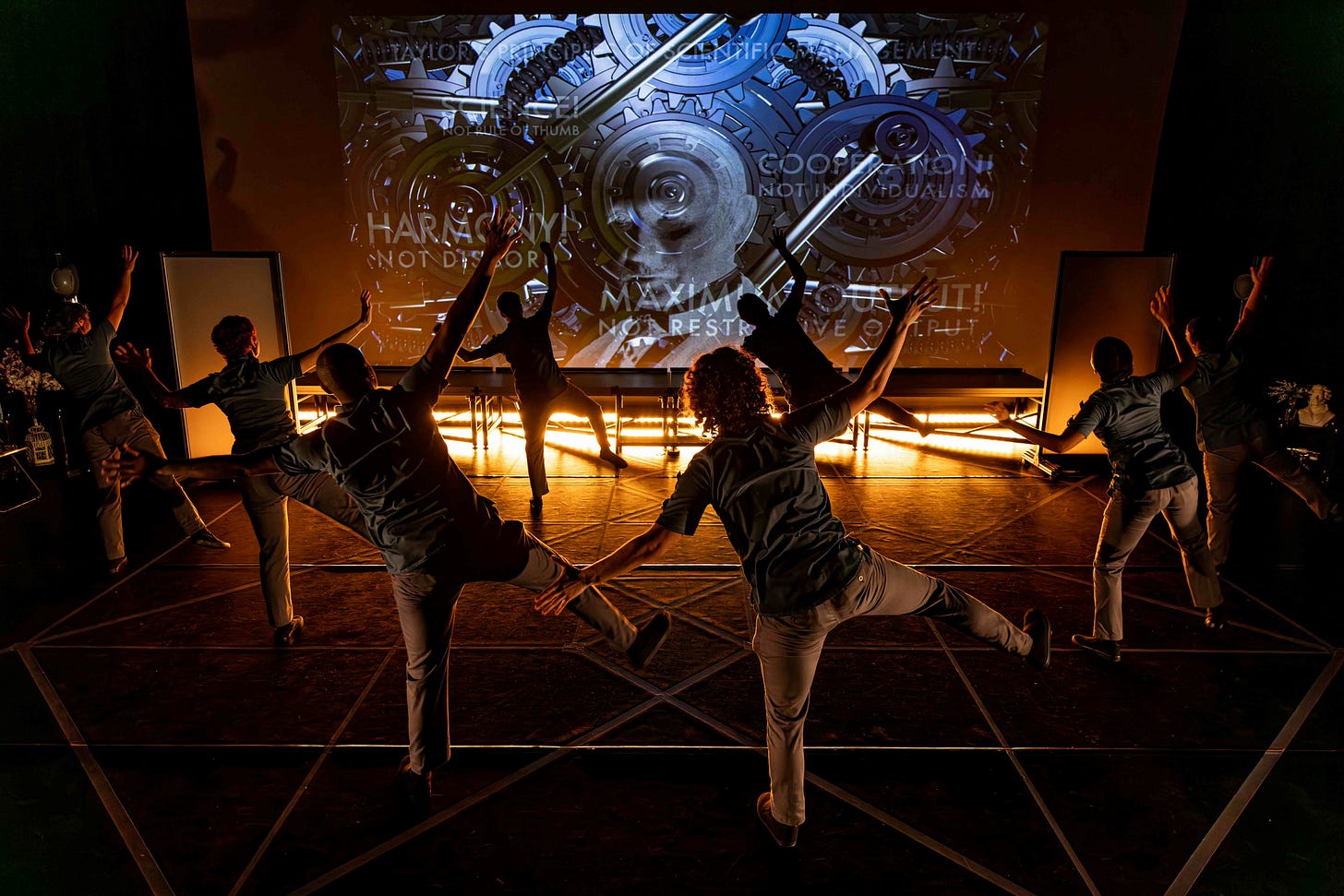
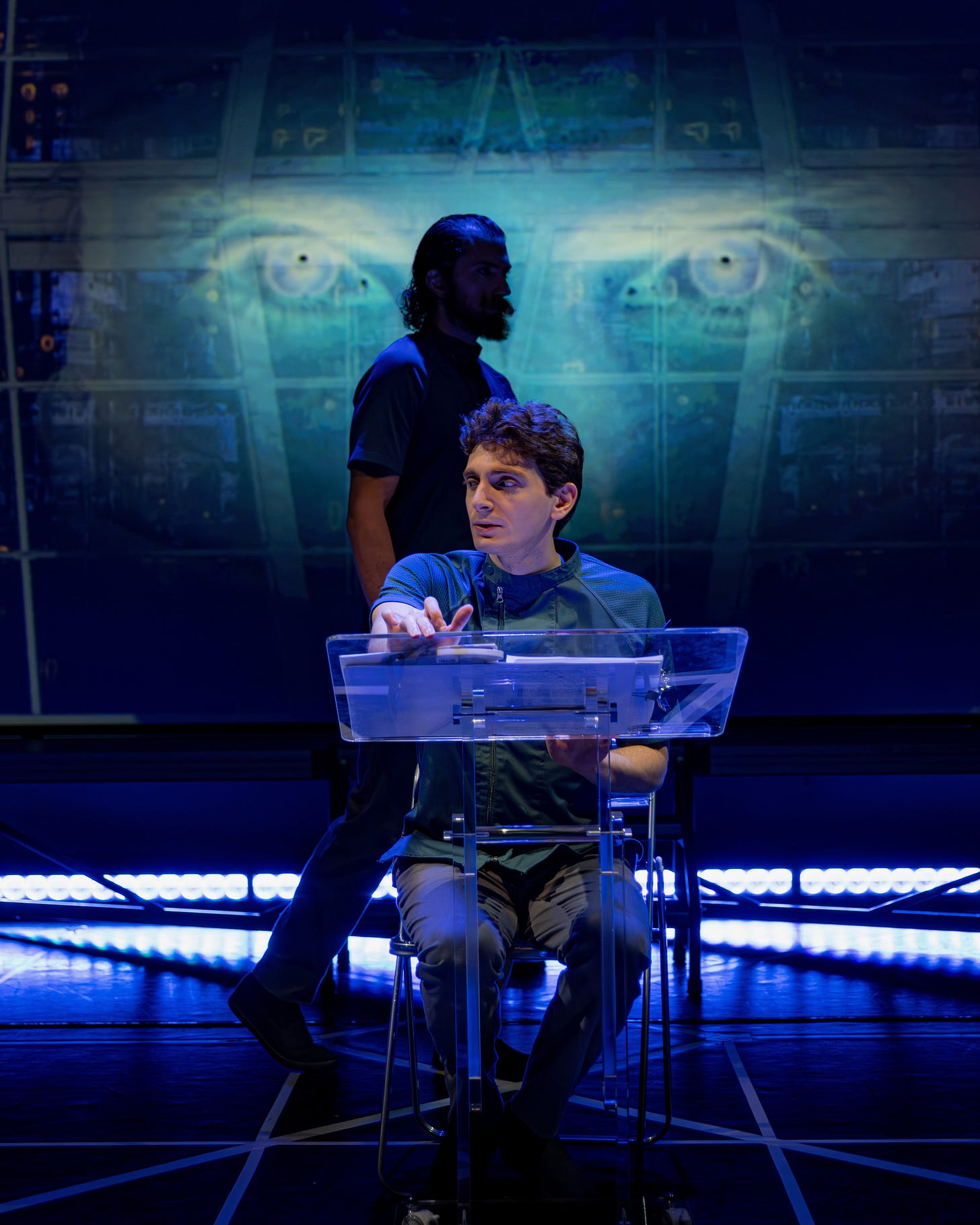
I loved this piece, Kevin! I'm remembering our wonderful rehearsals for the show last summer, and can't believe it has almost been a year since the performances... Keep on moving forward with what inspires you and your next creative vision. I have no doubt it is coming soon!!
Thanks for completing the story of the production’s tech and premiere -- you’re an excellent writer. Wish I could have seen the show, and I look forward to the next one.